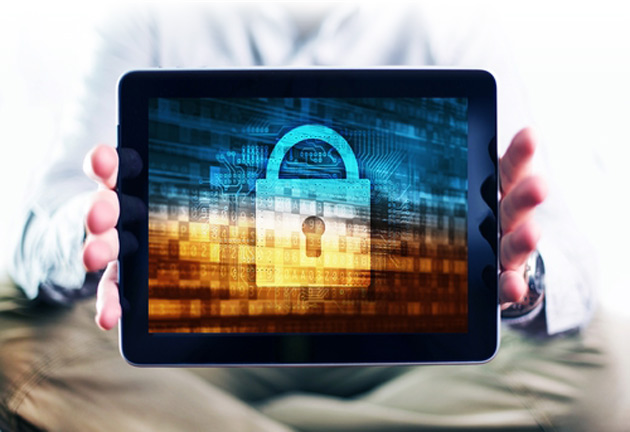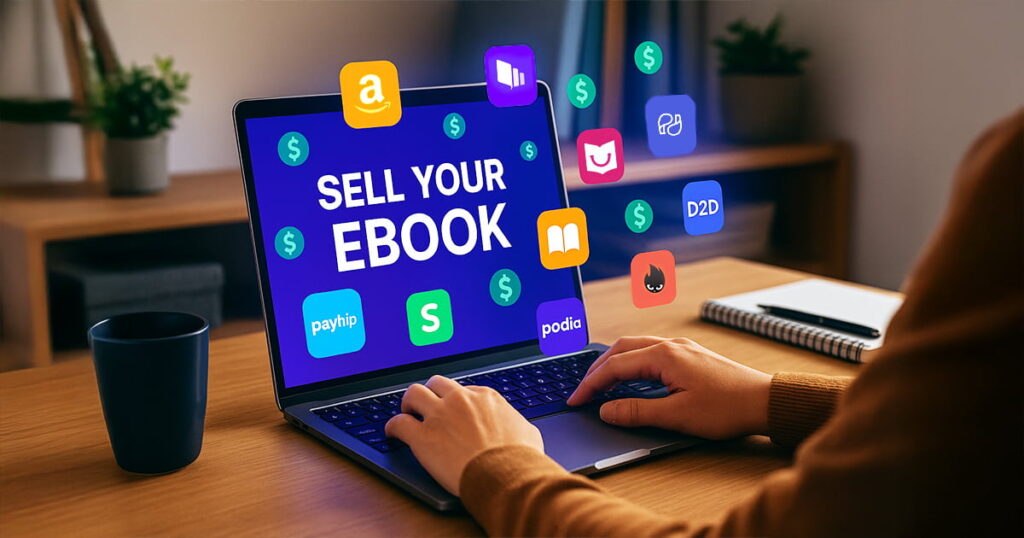Ebook DRM Simplified: What It Is and How to Use It
Even though the internet could be a godsend for authors who want to publish and share their work with the world, it also introduces significant risks, such as unauthorized use and distribution. This means you’ll have less control over your work once it’s online, unless steps are taken to protect how and when your ebooks are downloaded and by who.
One way to keep your work safe from piracy is by using Digital Rights Management (DRM), which provides digital content protection. Just as a security system protects a house, DRM is a protective barrier for your artistic property.
To help you create secure digital publications, we are going to explore everything you need to know about ebook DRM and share tips on how to guard your copyrights in the digital world.

What Is Ebook DRM?
In a nutshell, ebook DRM is a system that stops users from copying, printing, and sharing your ebooks without permission; this, in turn, protects the revenue that comes from each sale. It does this by restricting how, when, and by whom the books are used. This way you can make sure people must purchase your book to access its content.
How Ebook DRM Works
Ebook DRM can help safeguard your work by applying several security measures. These measures work together to protect your content and ensure your rights are respected. Here’s how it works:
- Controlling ebook distribution: DRM manages how ebooks are downloaded, uploaded, accessed, and even lent out.
- Tying ebooks to the buyer: Once purchased, the ebook is linked to the buyer’s account. This prevents the buyer from freely sharing the ebook with others.
- Restricting device downloads: Many ebook retailers enforce limits on the number of devices on which an ebook can be downloaded and accessed, typically allowing up to six devices. This ensures controlled access and minimizes sharing.
- Limiting copy-paste functionality: DRM significantly restricts or completely disables the ability to copy and paste text, which prevents unauthorized duplication.
What Are The Different Ebook DRM Schemes?
Since there are various ebook formats available today, major ebook retailers have created different DRM schemes to protect them. These schemes ensure copyright protection while often limiting how the ebooks are used across devices. Some of the most prominent DRM schemes include:
- Adobe DRM (formerly ADEPT): Widely used with EPUB and PDF formats, this DRM is compatible with Adobe Digital Editions and many third-party ebook readers.
- Amazon DRM: Designed for Kindle ebooks, Amazon’s proprietary DRM system supports formats like Mobi, AZW, and AZW3. This system is tightly integrated with Amazon’s platform, restricting the use of Kindle ebooks to Amazon devices and apps.
- Apple’s FairPlay DRM: Exclusively used for ebooks purchased from Apple Books, this DRM restricts access to Apple devices.

The Pros and Cons of Using Ebook DRM
DRM can be a double-edged sword in the world of ebook publishing. While it can be a valuable tool that protects intellectual property, it also brings limitations that can affect both creators and readers. Understanding the advantages and drawbacks of DRM is crucial for making informed decisions about its role in your digital publishing strategy.
Pros of Ebook DRM
- Protection against piracy: DRM helps safeguard your work from illegal copying and editing, ensuring you retain control over your intellectual property.
- Controlled distribution: Publishers can manage how their ebooks are shared by limiting unauthorized transfers or edits.
- Limited lending options: DRM allows for features like “limited lending facilities,” which enables readers to share your ebooks with friends or family under reasonable restrictions.
- Revenue Protection: DRM helps publishers and authors increase their ebook sales revenue by preventing any unauthorized distribution and piracy.
- Widespread adoption: Many major ebook sellers use DRM; this in turn ensures that your protected content can reach broader audiences while staying secure.
Cons of Ebook DRM
- Device compatibility issues: Different DRM schemes can restrict ebooks to specific devices or apps, preventing seamless transfers between devices. For example, Amazon’s DRM ties ebooks to Kindle devices or apps, which prevents readers from accessing these ebooks on other devices.
- Limited usage rights: Readers may face restrictions on how many devices an ebook can be downloaded to, and once the limit is reached, they may need to purchase the ebook again.
- Censorship concerns: There have been concerns that DRM can be used to censor content. This was evident in 2009 when Amazon remotely deleted Orwell’s books due to copyright issues. This incident highlighted the potential for DRM to suppress ideas or limit access to information, especially for controversial content.
- Loss of access: If a reader switches bookstores or the retailer shuts down, access to purchased ebooks can be lost.
- Vulnerability to cracking: Some DRM systems stored on devices have been cracked, making the protection ineffective.

Ebook DRM Alternative
There are currently several alternatives to DRMs that book distributors use to limit ebook piracy. While they might not be as effective, they can still protect your content to some extent. These alternatives are:
- Digital Watermarking (Social DRM): Instead of restricting access, digital watermarking (also known as social DRM) embeds visible or invisible information into the ebook file, such as the buyer’s name or purchase details. This method discourages unauthorized sharing by making the source of piracy traceable. The downside, however, is that this method doesn’t limit device usage or transfer; it just creates a psychological deterrent against piracy.
- Subscription Platforms: Platforms like Scribd and Kindle Unlimited allow readers to access a wide library of books under a subscription model, reducing the incentive for piracy.
- Encrypted Delivery: Secure delivery systems encrypt the ebook during the purchase and transfer process, but don’t impose ongoing restrictions after delivery. While traditional DRM involves restrictive measures on copying, sharing, and device compatibility, this method focuses on securing the file itself and ensures that only authorized users can access the content.
How to Create a DRM-Protected Ebook
The key to securing your ebook content is using reliable ebook creator software, such as Kotobee Author. This platform uses a different approach to the standard DRM; it uses cloud technology to encrypt ebooks with an encryption key and then store them on a server. Once the ebook is opened, the user will be asked for an email/password combination or a code. Authenticating correctly would retrieve the encryption key from the server and decrypt the ebook content.
What is great about this approach is that it is not specific to a certain device model. Rather, this same DRM scheme can protect an ebook running on different devices and in different formats: web, mobile, or desktop. It is important to note, however, that it cannot be applied directly to standard ebook formats like EPUB or PDF. The ebook needs first to be turned into a cloud ebook app.
Here’s all you need to do to create a DRM-protected ebook using Kotobee Author:
- Import your manuscript and make any necessary adjustments.
- Click on the Export on the top panel to create your cloud ebook.
- Once your cloud ebook is created, click on the Manage tab at the top panel.
- Go to the Cloud Ebooks section and select your ebook.
- Check the Enable Device DRM box and set the devices per user limit.
- Click Save Changes, and you’ll have your DRM-protected ebook ready to be shared with your audience.
Final Thoughts
Ebook DRM can be a powerful tool for authors and publishers who want to protect their work in the digital world. By implementing DRM measures, you can control how your content is accessed, distributed, and shared, and this can ensure that your intellectual property remains secure. Ultimately, choosing whether to use DRM—and which type—is a strategic decision that depends on your publishing goals and your audience.
.
Read more:
Ebook Copyright Page: How and Why to Make It
How to create an interactive ebook: A step-by-step guide
The Beginner’s Guide to Ebook Formats

















Louis Horvath
April 3, 2019My understanding of DRM is the corporations who hold the DRM locks (like Adobe) actually accumulate information from those who read the books. Notably the device model and type, the IP and the page where the client is reading. I value my readers too much to expose them to this type of “soft spying”.